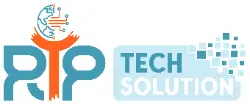Are you tired of your software development process being slow, inflexible, and inefficient? Do you want to deliver high-quality software that meets the changing needs of your customers? If so, you might want to consider adopting agile software development practices and techniques and applying them to agile project management.
Agile software development is a methodology that emphasizes flexibility, collaboration, and continuous improvement. It’s all about being adaptive, responsive, and focused on delivering value to customers. Instead of following a rigid, linear process that can’t accommodate change, agile software development works in short iterations called sprints. These sprints typically last one to four weeks, and each sprint delivers a working software increment that can be tested, reviewed, and adjusted as needed.
The Benefits of Agile Software Development
One of the main benefits of agile software development is that it emphasizes collaboration and communication among team members. By working together in short iterations, team members can share ideas, provide feedback, and work together to solve problems. This helps to build a sense of teamwork, ensures that everyone is aligned, and promotes innovation and creativity.
Another benefit of agile software development is that it’s designed to be flexible and adaptive. This means that if requirements change or if there are unforeseen issues, the team can quickly respond and adjust its approach. This helps to ensure that the project stays on track, meets the needs of the customer, and is delivered on time and within budget.
But perhaps the most significant benefit of adopting agile development is that it puts the customer at the center of the development process. By engaging with customers early and often, and by incorporating their feedback and insights into the development process, you can ensure that you’re building software that meets their needs and exceeds their expectations.
What Is Agile Project Management?
Agile project management is the practice of applying agile principles and practices to manage software development projects. It focuses on flexibility, transparency, and continuous improvement. With agile project management, you can ensure that your team is working on the most important features first and that you’re delivering high-quality software at every stage of the development cycle.
In an agile project management approach, you work with the customer to create a product backlog, which is a prioritized list of features and requirements that need to be implemented. The team then selects a subset of features from the product backlog to implement during the sprint. At the end of each sprint, the team reviews and demos the completed features to the customer collects feedback, and adjusts the product backlog accordingly.
The Kanban board is another agile tool that can be used to manage the agile software development process. It is a visual representation of the amount of work that needs to be done, the work that is in progress, and the work that has been completed. The Kanban board is a powerful tool for tracking progress and identifying bottlenecks in the development process.
The Role of the Product Owner and Scrum Master
In an agile project management approach, the product owner is responsible for maintaining the product backlog, prioritizing features, and ensuring that the development team is delivering value to the customer. The product owner works closely with the customer to ensure that the final product is meeting their needs and requirements.
The scrum master, on the other hand, is responsible for facilitating the agile development process and ensuring that the team is adhering to agile principles and agile practices. The scrum master helps to remove obstacles, facilitates communication and collaboration, and ensures that the team is continuously improving.
Agile Software Development Life Cycle (SDLC)
The agile software development life cycle (SDLC) includes several stages, including requirement analysis, design, development, testing, deployment, and maintenance. Agile methodologies can help you improve your software development life cycle by ensuring that you’re delivering high-quality software that meets the changing needs of your customers.
- Requirement Analysis: Requirement analysis is the first stage of the SDLC. In this stage, the development team works closely with the product owner and stakeholders to identify and gather requirements for the software. The objective of this stage is to understand the needs and requirements of the customer and define the scope of the project. The requirements gathered should be detailed, specific, and measurable to ensure that the team can develop software that meets the customer’s expectations.
- Design: In the design stage, the development team uses the requirements gathered in the previous stage to create a detailed design of the software. The design includes the architecture, interfaces, and data structures of the software. The design should also consider factors such as security, scalability, and performance. The objective of this stage is to create a blueprint for the software that the development team can use to build the software.
- Development: In the development stage, the project team builds the software according to the design created in the previous stage. The development team uses programming languages, frameworks, and tools to develop the software. The objective of this stage is to build software that meets the requirements gathered in the first stage.
- Testing: In the testing stage, the development team tests the software to ensure that it meets the requirements and functions correctly. The testing can be done manually or using automated testing tools. The objective of this stage is to identify any defects or issues with the software and fix them before deploying the software.
- Deployment: In the deployment stage, the software is released to the production environment. This stage involves installing, configuring, and testing the software on the production environment. The objective of this stage is to ensure that the software is stable, secure, and functional in the production environment.
- Maintenance: In the maintenance stage, the development team maintains the software and provides support to the users. This includes fixing defects, adding new features, and updating the software to meet changing requirements. The objective of this stage is to ensure that the software continues to meet the needs and requirements of the customer.
Each stage of the SDLC is important and must be completed thoroughly to ensure the success of the project. Agile methodologies can improve the SDLC by allowing for more flexibility and collaboration throughout each stage. By using agile approaches like daily scrum, sprint retrospective, and requirement analysis, the development team can continuously improve the software development process and deliver high-quality software that meets the changing needs of the customer.
The Importance of Continuous Improvement
One of the key principles of agile software development is continuous improvement. By continuously reviewing and reflecting on the development process, the team can identify areas for improvement and implement changes to increase efficiency, quality, and customer satisfaction.
In an agile project management approach, continuous improvement is achieved through retrospectives, which are meetings held at the end of each sprint to review the development process and identify areas for improvement. During the retrospective, the team reflects on what went well, what didn’t go well, and what changes can be made to improve the next sprint.
The Impact of Agile Software Development and Agile Project Management
By adopting agile software development practices and techniques, and applying them with agile project management, you can expect to see several benefits, including:
- Faster time-to-market: Agile software development allows you to deliver working software increments in short iterations, which means that you can get your product to market faster and respond to changing customer needs more quickly.
- Improved quality: Agile software development emphasizes testing and feedback, which means that you can catch and address issues early in the development process, resulting in higher-quality software.
- Greater customer satisfaction: By engaging with the customer early and often, and incorporating their feedback and insights into the development process, you can ensure that you’re building software that meets their needs and exceeds their expectations.
- Better team morale: Agile software development emphasizes collaboration, communication, and teamwork, which can boost morale and create a more positive work environment.
- Increased efficiency: Agile project management emphasizes prioritization, transparency, and continuous improvement, which can help to streamline the development process and increase efficiency.
Conclusion
In conclusion, agile software development and agile project management offer a powerful combination for improving your software development process. By adopting agile methodologies and using agile approaches like daily scrum, sprint retrospective, and requirement analysis, you can deliver high-quality software that meets the changing needs of your customers, and do so faster and more efficiently than ever before.
At RTP Tech Solution, we understand the importance of staying agile in a rapidly evolving tech landscape. We have the expertise and experience to help you implement agile methodologies in your software development process and optimize your software development life cycle. Don’t wait to start your agile journey – contact RTP Tech Solution today to learn how we can help you achieve your software development goals.



